Introduction
- Types of nausea and vomiting caused by chemotherapy
- Statistics of nausea and vomiting
- Risk factors of nausea and vomiting
- Other causes of nausea and vomiting
- What is the impact of nausea and vomiting?
- What causes vomiting?
- How is nausea and vomiting treated?
Introduction

Nausea is defined as a sick sensation felt in the stomach which may result in vomiting (or emesis). Vomiting is the act by which the stomach contents are expelled via the mouth. Chemotherapy is thought to initiate nausea and vomiting by activating chemicals which stimulate areas in the brain responsible for vomiting. These chemicals are known as neurotransmitters and they are responsible for relaying messages from the stomach to the brain. The key neurotransmitters involved are called serotonin, neurokinin-1 and dopamine.
CINV can be classified as acute, delayed or anticipatory based on the timing and type of chemotherapy drugs involved. Acute and delayed CINV are directly related to how likely the chemotherapy drug is to induce vomiting, or its “emetogenicity”. Anticipatory CINV, as the name suggests, is thought to be related to previous experiences with chemotherapy and the psychological triggers associated with it.
A huge amount of research, in addition to the development of new anti-vomiting drugs, has significantly improved the management of CINV over the last two decades. The emphasis is now on preventing nausea and vomiting altogether and, where this is unsuccessful, treating the symptoms as they arise. The three main drug classes used in the treatment of CINV are serotonin (5-HT3) receptor blockers, corticosteroids and neurokinin-1 blockers. There is a limited amount of research which has looked at non-drug treatments, including acupuncture and behavioural therapy.
 |
For more information on nausea and vomiting, see Nausea and Vomiting (Emesis). |
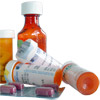 |
For more information on chemotherapy, see Chemotherapy. |
Types of nausea and vomiting caused by chemotherapy
Five distinct forms of chemotherapy-induced nausea and vomiting (CINV) have been identified:
- Acute CINV;
- Delayed CINV;
- Anticipatory CINV;
- Breakthrough CINV; and
- Refractory CINV.
Acute CINV
Acute nausea and vomiting occurs within a few minutes to several hours after receiving chemotherapy, and usually does not last longer than 24 hours. The symptoms typically reach maximum intensity 5–6 hours after receiving the chemotherapy.
Delayed CINV
Delayed CINV occurs more than 24 hours after chemotherapy. It is more likely to occur when certain chemotherapy drugs are used or given in higher doses. Cisplatin is one drug known to induce delayed CINV. Nausea and vomiting caused by cisplatin reaches its maximum intensity 48–72 hours after treatment and can last for 6–7 days.
Anticipatory CINV
Anticipatory nausea or vomiting occurs before the beginning of a new cycle of chemotherapy in individuals who have had chemotherapy previously. It is believed to be a conditioned response that typically occurs after 3–4 prior cycles of chemotherapy, and is also referred to as conditioned, learned or psychological nausea. It is usually triggered by the taste, odour, sight or thoughts that the individual learns to associate with negative symptoms experienced in previous cycles of chemotherapy.
Breakthrough CINV
Breakthrough emesis is a term that refers to vomiting that occurs despite the use of drugs to prevent nausea and vomiting and may require “rescue” (administration of another drug or drugs to control the condition) with anti-nausea and vomiting medication.
Refractory CINV
Refractory emesis refers to vomiting that occurs in treatment cycles after the unsuccessful use of anti-vomiting or “rescue” medications in the previous treatment cycle. Fortunately, refractory CINV only occurs in a minority of cases.
Statistics of nausea and vomiting

Depending on the type of chemotherapy administered, about two thirds of chemotherapy cycles will result in at least one episode of nausea or vomiting, even if anti-vomiting drugs have been given. Delayed vomiting may occur in about twice as many individuals as acute vomiting. Conversely, acute nausea appears to be experienced by about twice as many people as delayed nausea.
Anticipatory nausea may be experienced by about 30% of people receiving chemotherapy, while anticipatory vomiting occurs in about 10% of people.
Risk factors of nausea and vomiting
Factors which lead to the development of CINV can be related to the drug itself or to characteristics particular to the individual taking the drug.
Drug-related risk factors include the:
- Potential of the chemotherapy to induce vomiting (emetogenicity);
- Dose;
- Schedule (whether the drug is given on a single-day versus multi-day basis); and
- Route of administration (e.g. oral – by mouth, or intraperitoneal – into the abdominal cavity).
Individual-related risk factors for CINV include:
- Age;
- Gender;
- Prior chemotherapy;
- History of motion sickness or nausea with pregnancy; and
- A history of chronic alcohol use.
Drug-related factors
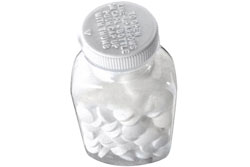
Four categories of emetogenic potential exist:
- Highly emetogenic agents: Cause CINV in > 90% of patients without drugs to prevent vomiting;
- Moderately emetogenic agents: Cause CINV in 30–90% of patients without drugs to prevent vomiting;
- Low emetogenic agents: Cause CINV in 10–30% of patients without drugs to prevent vomiting; and
- Minimally emetogenic agents: Have a < 10% risk of causing CINV without the use of drugs to prevent vomiting.
There are many medications that can be used in cancer treatment and they can vary considerably in their vomit-inducing potential. Your oncologist will provide you with information regarding the specific medication they have determined would be most suitable for you. Some examples of high, moderate, low and minimal emetogenicity drugs are shown in Table 1, which illustrates the ability of a few chemotherapy drugs/agents to induce vomiting.
Table 1: Emetogenicity of commonly used chemotherapeutic agents
| Emetogenicity of agent | Agent |
|---|---|
| High (> 90%) | Cisplatin Mechlorethamine |
| Moderate (30–90%) | Oxiplatin Cytarabine > 1 gm/m2 |
| Low (10–30%) | Paclitaxel Docetexel |
| Minimal (< 10%) | Bleomycin Busulfan |
In some instances, a combination of chemotherapy drugs/agents may be used, which makes it difficult to estimate the ability of the combination to induce vomiting. Combinations of drugs are considered to be more likely to induce vomiting than a single drug unless the dose of drugs in the combination is lowered. If the dose or rate at which chemotherapy is given is increased, this increases the risk of vomiting.
The setting in which chemotherapy is given is another important variable. Hospitalised individuals may have a lower rate of vomiting than those who receive chemotherapy outside of the hospital.
Individual-related factors

Females and those who experienced nausea and vomiting immediately after chemotherapy are more likely to develop delayed nausea and vomiting.
In addition, genetic factors may be important to the development of nausea and vomiting after chemotherapy. In some instances, these individuals may process the drugs faster, which means that the effects do not last for as long.
Risk factors for the development of anticipatory nausea and vomiting include:
- Age younger than 50 years;
- Nausea and/or vomiting after last chemotherapy session;
- Post-treatment nausea described as moderate, severe or intolerable;
- Post-treatment vomiting described as moderate, severe or intolerable;
- Susceptibility to motion sickness;
- Feeling warm or hot all over after last chemotherapy session;
- Sweating after the last chemotherapy session; and
- Generalised weakness after the last chemotherapy session.
Individuals who experience fewer than 3 of these 8 characteristics are less likely to develop anticipatory nausea and vomiting.
Other causes of nausea and vomiting
Your doctor will consider other possible causes of nausea and vomiting, particularly outside of the hospital setting. Other causes of vomiting in people with cancer include:
- Radiotherapy;
- Inner ear problems;
- Reduced motility of the intestines associated with chemotherapy (chemotherapy-induced gastroparesis);
- Medication, including painkillers and antibiotics;
- Bowel obstructions;
- Constipation;
- Anxiety; and
- Urinary tract infections.
What is the impact of nausea and vomiting?
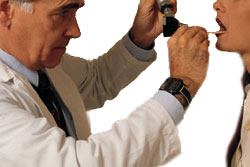
Nausea and vomiting following chemotherapy have been attributed to weakness, weight loss, dehydration and loss of appetite. Complications associated with CINV include broken bones, tears to the gullet (throat) from vomiting, depression and poor healing of wounds.
Where economic impact is concerned, both direct and indirect costs will be considered by your doctor. Direct costs are those associated with acquiring and administering anti-vomiting drugs and additional care in the form of nursing and physician time, and costs associated with hospitalisation. Indirect costs are those associated with lost time from the work force for individuals and their caregivers as a result of CINV.
What causes vomiting?
The vomiting reflex
The vomiting reflex is complex and coordinated by a collection of nerves located in the brain known as the “vomiting centre”. The vomiting centre receives signals from other parts of the brain, the inner ear, stomach and intestines. It processes these signals and is then responsible for activating those muscles and body systems responsible for vomiting. The process involved in the development of nausea is less well understood.
 Chemotherapy and vomiting
Chemotherapy and vomiting
Chemotherapy itself is thought to trigger vomiting through two different pathways. Firstly, chemotherapy causes damage to cells which line the intestines. These cells release a chemical messenger called serotonin, which stimulates the nerve to carry vomit-inducing signals to the vomiting centre. Secondly, chemotherapy releases vomit-inducing substances into the blood, which then travel to the brain and stimulate the vomiting centre.
Neurotransmitters
Three chemical messengers, known as neurotransmitters, are responsible for transmitting vomiting signals to the brain. These are serotonin, substance P and dopamine. Neurotransmitters are responsible for transmitting signals from one nerve to the next by binding to a receptor located on the nerve ending. This activates the nerve and causes transmission of the signal. For example, chemotherapy causes damage to cells within the intestine that in turn release serotonin. Serotonin binds to receptors on nerve endings within the intestines, causing the nerve to submit a signal to the brain. This ultimately results in stimulation of the vomiting centre. Drugs that stop vomiting work by blocking the binding of the neurotransmitter to its receptor.
How is nausea and vomiting treated?
A range of drugs and non-drug treatment options are available for the management of CINV. Significant advances in this field have made the complete prevention of nausea and vomiting the goal of management.
The choice of drugs used to prevent chemotherapy-induced nausea and vomiting is guided by the type of chemotherapy agent(s) used and its ability to induce vomiting. Non-drug treatment is mainly used for anticipatory nausea and vomiting.
Anti-vomiting drugs
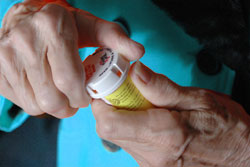
- Serotonin receptor antagonists (5-HT3RAs), which block the serotonin receptor;
- Neurokinin-1 receptor antagonists, which block the substance P receptor; and
- Corticosteroids.
A range of other drugs, including benzodiazepines, are sometimes used in addition to these three main agents.
Serotonin receptor blockers (antagonists)
5-HT3 receptor blockers are considered to be one of the most effective classes of anti-vomiting drugs in the prevention of acute CINV. These drugs work by blocking the binding of the chemical messenger serotonin to its receptor. This in turn stops the transmission of vomit-inducing signals to the vomiting centre in the brain. There are five drugs currently available in this class;
- Ondansetron (e.g. Zofran, Ondaz, Onsetron)
- Granisetron (Kytril)
- Tropisetron (Navoban)
- Dolasetron (Anzemet); and
- Palonosetron (Aloxi).
Palonosetron is the newest of these drugs, known as a second-generation serotonin receptor blocker. In most situations, these drugs are very safe to take and have minimal side effects. The most common side effects are mild headache, constipation and a temporary disturbance of liver enzymes. If you have any concerns regarding the use of these or any other medications, speak with your doctor.
 |
For more information on serotonin receptor blockers, see 5-HT3 Receptor Antagonists (Serotonin Blockers). |
Substance P blockers (antagonists)
The newest class of anti-vomiting drugs are the neurokinin-1 receptor antagonists, which block the binding of substance P to its receptor. These drugs play an important role in the prevention of delayed vomiting.
The only drug available in this class is called aprepitant (Emend), which comes in a tablet form and in an injectable form under the name of fosaprepitant. The most common side effects associated with this drug class include headache, loss of appetite, diarrhoea, hiccups and mild interference with liver function. Because this drug is metabolised by a particular pathway in the liver, it may affect the absorption of other drugs which use the same pathway, including warfarin (a blood thinner), phenytoin (an anti-epileptic drug), some anti-fungal medications and the contraceptive pill.
Corticosteroids
Corticosteroids play an important role in preventing both acute and delayed nausea and vomiting. The mechanism by which these drugs work in preventing vomiting is poorly understood. Dexamethasone is the most commonly used corticosteroid drug.
These drugs are well tolerated when used for a short period of time. The side effects of dexamethasone when used in the week following chemotherapy may include sleeplessness, indigestion/stomach discomfort, agitation, increased appetite, weight gain and acne.
Dopamine receptor blockers (antagonists)
Several classes of dopamine receptor antagonists are available for the prevention of nausea and vomiting. These agents block the binding of dopamine to receptors in the brain and also stimulate motility of the intestines. Metoclopramide (Maxolon) is the most commonly used drug. It binds to receptors located throughout the brain and not solely to receptors associated with initiating nausea and vomiting. This results in a number of side effects, including abnormal movements, sleepiness and the production of a hormone known as prolactin which can cause breastmilk production and menstruation disorders.
Benzodiazepines
Benzodiazepines (e.g. diazepam) are another class of drug which is useful in the treatment of anxiety associated with anticipatory CINV. These drugs, commonly used as sleeping tablets, reduce anxiety through their ability to make you calm and sleepy.
Olanzapine
Olanzapine (Zyprexa) is another drug that has demonstrated the ability to reduce nausea and vomiting. This is normally a drug used in psychiatry patients. It has significant side effects, including sleepiness, dizziness, weight gain and dry mouth. Olanzapine is used to prevent both acute and delayed vomiting in addition to refractory and breakthrough vomiting. This drug is used with caution in elderly individuals with dementia and in people who have diabetes.
Nausea and vomiting management guidelines

Key principles
Current guidelines outline several key concepts in the prevention of chemotherapy-induced nausea and vomiting, including:
- Anti-vomiting drugs work best when given before starting chemotherapy;
- Anti-vomiting drugs should be continued for the same length of time as the chemotherapy itself; and
- Anti-vomiting drugs can be given in lots of different forms, including tablets which are swallowed, tablets inserted into the rectum, drugs injected through the skin or into a vein, and most recently in patches to be absorbed through the skin. The tablet form is just as effective as the other routes in preventing vomiting. For individuals who are unable to swallow or digest tablets, the injectable or patch forms may be more suitable.
Summary of current guidelines
Prevention of acute emesis
Your oncologist will choose the best anti-vomiting medication for your particular chemotherapy treatment.
To prevent acute (immediate) vomiting from highly vomit-inducing chemotherapy, your doctor may prescribe the use of a serotonin blocker (such as granisetron or palonosetron) plus a corticosteroid (such as dexamethasone) plus a substance P blocker (fosaprepitant).
When the chemotherapy involves moderately vomit-inducing medication, your oncologist may prescribe a serotonin blocker plus a corticosteroid, and may or may not decide to also include a substance P blocker.
For low vomit-inducing chemotherapy regimens, your oncologist is likely to prescribe only a corticosteroid, and for minimally vomit-inducing chemotherapy, they may not prescribe any anti-vomiting medication at all.
Prevention of delayed emesis
To help prevent delayed vomiting following chemotherapy with a highly vomit-inducing medication, your oncologist may prescribe a corticosteroid (such as dexamethasone) plus a substance P blocker (fosaprepitant).
Where the chemotherapy is classed as being moderately vomit-inducing, your oncologist may choose to prescribe a corticosteroid, or a serotonin blocker (such as granisetron or palonosetron), or a substance P blocker.
For chemotherapy regimens that are low and minimally vomit-inducing, your oncologist may decide that no anti-vomiting medication is required.
Prevention of anticipatory nausea
The best approach to preventing anticipatory nausea and vomiting is to control acute and delayed emesis. Treatment for anticipatory nausea and vomiting is most effective when identified early.
Anti-vomiting drugs are not effective in the treatment of established anticipatory nausea and vomiting. Instead, a class of drugs known as benzodiazepines may be used.
Non-drug treatment of nausea and vomiting

The herbal supplement ginger has demonstrated an ability to reduce nausea and vomiting associated with pregnancy and after surgery, but has not shown any additional benefit with chemotherapy-induced nausea and vomiting.
A range of behavioural therapies, delivered by psychologists, have proven to be beneficial in the treatment of anticipatory nausea and vomiting. These include muscle relaxation, hypnosis and a technique known as systematic desensitisation.
More information
 |
For more information on cancer, including breast, prostate, kidney and stomach cancer, see Cancer: Overview. |
References
- de Boer-Dennert M, de Wit R, Schmitz PI, et al. Patient perceptions of the side-effects of chemotherapy: The influence of 5HT3 antagonists. Br J Cancer. 1997;76(8):1055-61. [Abstract | Full text]
- Liau CT, Chu NM, Liu HE, et al. Incidence of chemotherapy-induced nausea and vomiting in Taiwan: Physicians’ and nurses’ estimation vs. patients’ reported outcomes. Support Care Cancer. 2005;13(5):277-86. [Abstract]
- Prevention of acute/delayed nausea and vomiting (emesis) [online]. Bethesda, MD: National Cancer Institute; 16 March 2011 [cited 30 April 2011]. Available from: URL link
- Baker PD, Morzorati SL, Ellett ML. The pathophysiology of chemotherapy-induced nausea and vomiting. Gastroenterol Nurs. 2005;28(6):469-80. [Abstract]
- Jordan K, Sippel C, Schmoll HJ. Guidelines for antiemetic treatment of chemotherapy-induced nausea and vomiting: Past, present, and future recommendations. Oncologist. 2007;12(9):1143-50. [Abstract | Full text]
- Aapro M, Molassiotis A, Olver I. Anticipatory nausea and vomiting. Support Care Cancer. 2005;13(2):117-21. [Abstract]
- Navari R. Pharmacological management of chemotherapy-induced nausea and vomiting: focus on recent developments. Drugs. 2009;69(5):515-33. [Abstract]
- Feyer P, Jordan K. Update and new trends in antiemetic therapy: The continuing need for novel therapies. Ann Oncol. 2011;22(1):30-8. [Abstract | Full text]
- Ernst E, Pittler MH. Efficacy of ginger for nausea and vomiting: A systematic review of randomized clinical trials. Br J Anaesth. 2000;84(3):367-71. [Abstract | Full text]
- Konno R. Cochrane review summary for cancer nursing: Acupuncture-point stimulation for chemotherapy-induced nausea or vomiting. Cancer Nurs. 2010;33(6):479-80. [Abstract]
- Ettinger D, Armstrong K, Barbour S, et al. NCCN Clinical Practice Guidelines in Oncology: Antiemesis [online]. National Comprehensive Cancer Care Network; 2011 [cited 30 April 2011]. Available from: URL link
- Ihbe-Heffinger A, Ehlken B, Bernard R, et al. The impact of delayed chemotherapy-induced nausea and vomiting on patients, health resource utilization and costs in German cancer centers. Ann Oncol. 2004;15(3):526-36. [Abstract | Full text]
- Morrow GR, Roscoe JA, Kirshner JJ, et al. Anticipatory nausea and vomiting in the era of 5-HT3 antiemetics. Support Care Cancer. 1998;6(3):244-7. [Abstract]
- Lohr L. Chemotherapy-induced nausea and vomiting. Cancer J. 2008;14(2):85-93. [Abstract]
- Pollera CF, Giannarelli D. Prognostic factors influencing cisplatin-induced emesis. Definition and validation of a predictive logistic model. Cancer. 1989;64(5):1117-22. [Abstract | Full text]
- Grunberg SM, Warr D, Gralla RJ, et al. Evaluation of new antiemetic agents and definition of antineoplastic agent emetogenicity: State of the art. Support Care Cancer. 2011;19(Suppl 1):S43-7. [Abstract]
- Roila F, Herrstedt J, Aapro M, et al. Guideline update for MASCC and ESMO in the prevention of chemotherapy- and radiotherapy-induced nausea and vomiting: Results of the Perugia consensus conference. Ann Oncol. 2010;21(Suppl 5):v232-43. [Abstract | Full text]
- Tonato M, Roila F, Del Favero A. Methodology of antiemetic trials: A review. Ann Oncol. 1991;2(2):107-14. [Abstract | Full text]
- Roila F, Tonato M, Basurto C, et al. Protection from nausea and vomiting in cisplatin-treated patients: High-dose metoclopramide combined with methylprednisolone versus metoclopramide combined with dexamethasone and diphenhydramine: A study of the Italian Oncology Group for Clinical Research. J Clin Oncol. 1989;7(11):1693-700. [Abstract]
- Sullivan JR, Leyden MJ, Bell R. Decreased cisplatin-induced nausea and vomiting with chronic alcohol ingestion. N Engl J Med. 1983;309(13):796. [Abstract]
- Feeney K, Cain M, Nowak AK. Chemotherapy-induced nausea and vomiting: Prevention and treatment. Aust Fam Physician. 2007;36(9):702-6. [Abstract | Full text]
- Ballatori E, Roila F, Ruggeri B, et al. The impact of chemotherapy-induced nausea and vomiting on health-related quality of life. Support Care Cancer. 2007;15(2):179-85. [Abstract]
- Ritter HL Jr, Gralla RJ, Hall SW, et al. Efficacy of intravenous granisetron to control nausea and vomiting during multiple cycles of cisplatin-based chemotherapy. Cancer Invest. 1998;16(2):87-93. [Abstract]
- Haiderali A, Menditto L, Good M, et al. Impact on daily functioning and indirect/direct costs associated with chemotherapy-induced nausea and vomiting (CINV) in a US population. Support Care Cancer. 2011;19(6):843-51. [Abstract]
- Hesketh PJ. Chemotherapy-induced nausea and vomiting. N Engl J Med. 2008;358(23):2482-94. [Abstract]
- Rang H, Dale M, Ritter J, et al. Pharmacology (5th edition). Edinburgh: Churchill Livingstone; 2003. [Book]
- Perwitasari DA, Gelderblom H, Atthobari J, et al. Anti-emetic drugs in oncology: Pharmacology and individualization by pharmacogenetics. Int J Clin Pharm. 2011;33(1):33-43. [Abstract | Full text]
- 5HT-3 receptors [online]. Adelaide, SA: Australian Medicines Handbook; January 2011 [cited 30 April 2011]. Available from: URL link
- Aapro M, Fabi A, Nolè F, et al. Double-blind, randomised, controlled study of the efficacy and tolerability of palonosetron plus dexamethasone for 1 day with or without dexamethasone on days 2 and 3 in the prevention of nausea and vomiting induced by moderately emetogenic chemotherapy. Ann Oncol. 2010;21(5):1083-8. [Abstract | Full text]
- Vardy J, Chiew KS, Galica J, et al. Side effects associated with the use of dexamethasone for prophylaxis of delayed emesis after moderately emetogenic chemotherapy. Br J Cancer. 2006;94(7):1011-5. [Abstract | Full text]
- Tramèr MR, Carroll D, Campbell FA, et al. Cannabinoids for control of chemotherapy-induced nausea and vomiting: Quantitative systematic review. BMJ. 2001;323(7303):16-21. [Abstract | Full text]
- White B. Ginger: An overview. Am Fam Physician. 2007;5(11):1689-91. [Full text]
Diseases and conditions related to chemotherapy-induced nausea and vomiting (CINV)
Treatments related to chemotherapy-induced nausea and vomiting (CINV)
Drugs used in the treatment of chemotherapy-induced nausea and vomiting (CINV)
- Aloxi (palonosetron hydrochloride)
- Emend (aprepitant)
- Kytril tablets (granisetron)
- Maxolon (metoclopramide hydrochloride)
- Zofran (ondansetron)
All content and media on the HealthEngine Blog is created and published online for informational purposes only. It is not intended to be a substitute for professional medical advice and should not be relied on as health or personal advice. Always seek the guidance of your doctor or other qualified health professional with any questions you may have regarding your health or a medical condition. Never disregard the advice of a medical professional, or delay in seeking it because of something you have read on this Website. If you think you may have a medical emergency, call your doctor, go to the nearest hospital emergency department, or call the emergency services immediately.


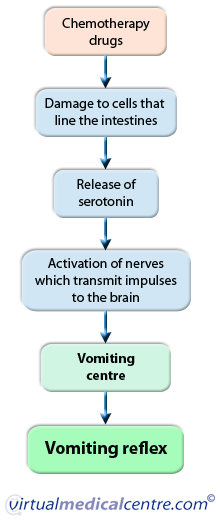 Chemotherapy and vomiting
Chemotherapy and vomiting





